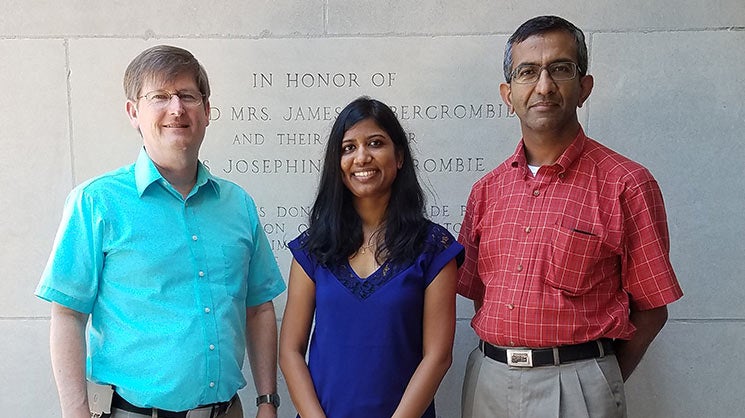“Scientists dream of particles that assemble themselves in specific ways to create functional materials. One such building block for these materials is called a patchy colloid.”
Walter Chapman sees enormous promise in these substances with so unlikely a name. A conventional colloid is a mixture of substances in which one is microscopically suspended, in the form of insoluble particles, throughout another. Milk, shampoo and ink are colloids.
“Scientists can create patchy colloids that have these patchy surfaces – think of Velcro – that cause particles to stick together. By varying the type and shape of these patches, the particles assemble into 2D and 3D structures that have specific optical, mechanical and chemical properties,” said Walter G. Chapman, the William W. Akers Professor in the George R. Brown School of Engineering at Rice University. The challenge is to develop a theory that explains the interactions within patchy colloids, so as to predict their final structure.
Colloidal systems are a test-bed for understanding how inter-molecular forces determine the functional structure of materials. Chapman and two colleagues have developed the first rigorous theoretical approach to modeling the behavior of patchy colloids with arbitrary interaction geometry, such as Janus or Saturn-ring colloids, one divided into contrasting hemispheres, the other with an equatorial ring.
Their research, titled “A cluster size distribution theory to study the thermodynamics and phase behavior of multi-bonding single site solutes in patchy colloidal mixtures,” appears in the journal Soft Matter, published by the Royal Society of Chemistry.
The lead author of the paper is Artee Bansal, who earned her Ph.D. in chemical and biomolecular engineering (ChBE) from Rice in 2017 and now works as a process engineer with Intel in Portland, Ore. Their co-author is Dilip Asthagiri, a research scientist in ChBE at Rice.
Before the new research, an accurate description of multi-particle interactions in patchy-colloidal systems remained a challenge. The most commonly used model for patchy colloids, Chapman’s Statistical Associating Fluid Theory (SAFT), was limited in patch geometry and size, permitting only one bond per patch. In the newly published article, Bansal combined SAFT with Asthagiri’s quasi-chemical theory to develop a framework for modeling multi-particle interactions in complex, patchy colloidal systems with any patch geometry and size.
“Patchy colloids are used to build functional soft materials, but the field has lacked a predictive model to direct the experimental studies. Our modeling approach opens new avenues for designing self-assembled materials, which have many applications,” Chapman said.
Among the potential applications for patchy colloids are biochemical sensors, drug-delivery systems, advanced surfactant molecules, gelation aids and supramolecular polymers. They can also serve as useful models for such natural systems as the aggregation of globular proteins and hydrogen bonding in water and alcohol.
“Of fundamental interest to us,” Chapman said, “is that our studies predict the existence of a so-called ‘empty liquid,’ a liquid that exists at very low densities. An extension of this work has potential to predict the properties of electrolytes in extreme environments, a question of fundamental interest in science and technology.”
Their research is supported by the Welch Foundation and Abu Dhabi National Oil Company.

